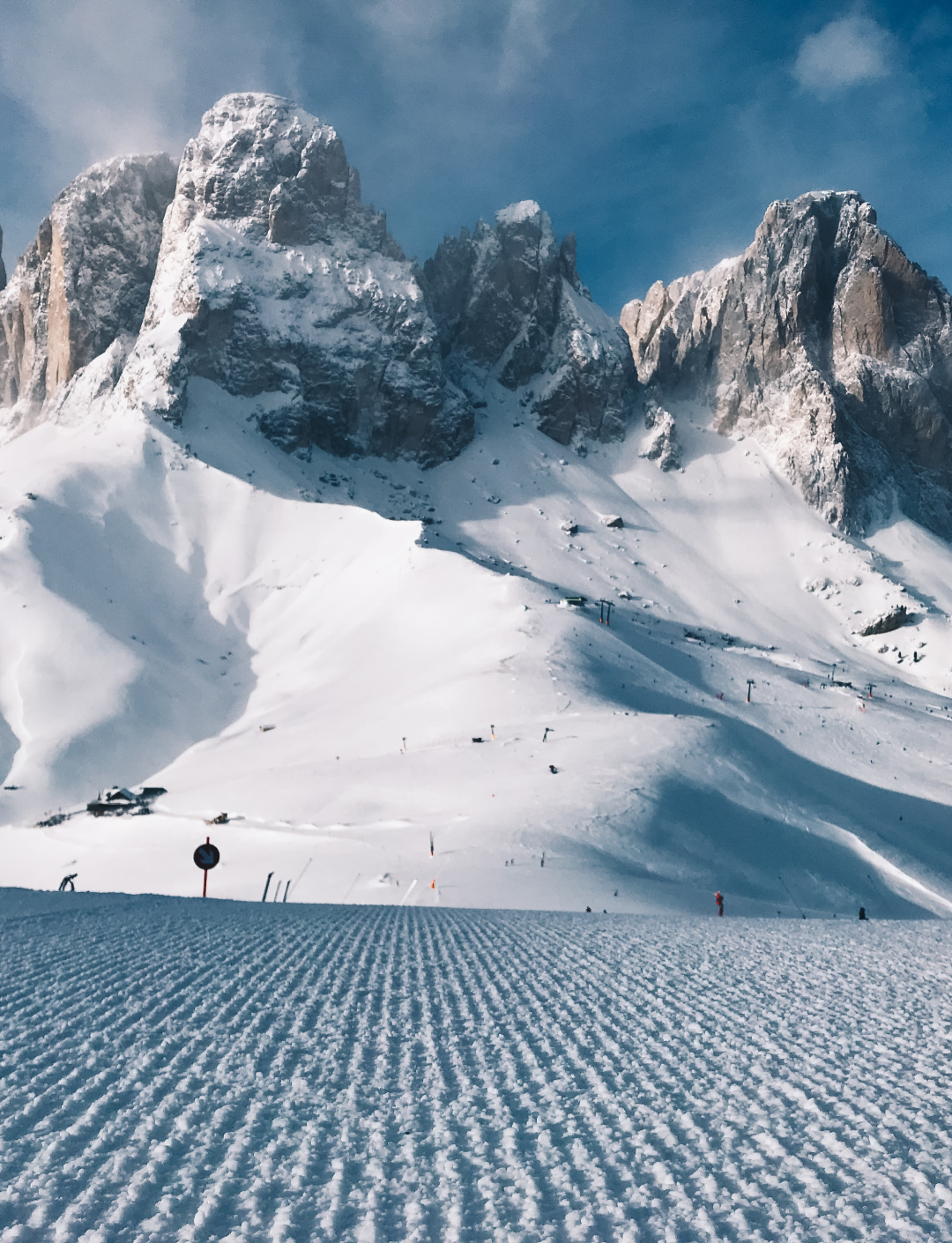If you’ve been skiing or boarding for a while, it’s likely you’ve been down a run that was out of your comfort zone. You could have incorrectly read the trail map, taken a wrong turn, or were trying to show off to a friend. Regardless, those prolonged minutes spent ‘just getting down’ can leave you petrified and relieved to reach the bottom. Such an unpleasant experience can crush your confidence on the slopes. As a result, you might be less likely to push yourself in the future and in a worst case scenario it could turn you off snow sports entirely.


While it’s unreasonable to think you’ll never make a mistake again, you can become better prepared to handle challenging situations. Building up your confidence on the slopes is crucial so that when you do get in over your head, you can get down safely — and ideally panic-free. Increasing your confidence on the slopes isn’t all about improving your technical skiing or boarding skills but rather becoming more aware of your surroundings and learning what your capabilities are. It’s a combination of problem solving and the ability to read your environment. Here at
UtahSkis, we want to help you achieve just that — with the hopes in making for a better overall experience for everyone.
The 5 P’s
Traditionally, the 5 P’s stand for “Proper Planning Prevents Poor Performance.” In this context, it represents “Preparation Prevents Panicking on Petrifying Pistes.” If you’re new to snow sports, learning how to ski or board is only part of the process. It’s important to assimilate basic mountain knowledge, get a grasp on how to read resort maps, make sure you’re outfitted with the proper gear, and familiarize yourself with the
Alpine Responsibility Code — besides taking note of individual resort rules. It sounds like a lot — but these skills are worth their weight in fresh powder. Let’s break them down.
Mountainous Environments
Learning to read your environment is helpful in any outdoor sport, but especially crucial in the mountains. Mountainous conditions are constantly changing and a little knowledge can save you from a ton of misery —like getting stuck mid-run with no visibility, caught on a chairlift in massive wind gusts, or sliding down a run that’s been transformed into an ice sheet. If being miserable isn’t enough to sway you, the thought of injury might. The mountains can be dangerous if you’re not careful — even at the most well-maintained resorts.
Start by checking the weather daily, paying particular attention to temperature and wind changes. If it’s going to be above freezing midday, plan for the slopes to turn slushy. If it rained the evening before and dropped below freezing that night, it’s likely the slopes will be icy come morning. If it’s a windy day, it will likely get windier the higher up the mountain you go. If it’s a cold day but supposed to be sunny, follow the sun by skiing east-facing slopes in the morning and west-facing slopes in the afternoon. Also, most resorts offer daily snow reports, indicating if they’ve made snow that day, which runs are open, and which runs have been groomed.
Reading Trail Maps
While the trail maps will differ at each resort, the symbols are pretty universal. Chairlifts are represented with straight red lines and often feature the number of seats. Runs are graded in difficulty by color code — but it’s important to note that difficulty doesn’t just mean the trail’s steepness. It also includes factors like obstacles, chutes, glades, and sharp turns. As a general rule of thumb, green runs are considered the easiest, blue runs are intermediate, single black diamond runs are advanced, and double black diamond runs indicate expert terrain.
Although the system is universal, grades can vary from place to place. The first time you ski a new location, it’s best to start on an easy run and work your way up. Be aware that yellow areas on maps indicate slow zones and orange circles represent terrain parks. (Don’t worry about memorizing all this — the key on your trail map should tell you.)
Having the Proper Gear
Comfort can really boost your confidence, especially when it comes to your gear. Make sure you have properly fitting boots and bindings and skis or a board suited to your experience level. If you’re a beginner and your skis are way too long, you’re going to struggle with turning. In addition to length, consider the type of skiing you plan on doing and choose your equipment accordingly (i.e. don’t try to ski deep powder in racing skis). How tight your bindings are makes a difference too, so be transparent about your experience level and always have a professional check your gear.
Rules and Regulations
If you’re going somewhere new, plan to spend some time in advance familiarizing yourself with the location’s rules and regulations. Ski resorts try their best to minimize injuries and maximize enjoyment, so any rules in place are there for good reason. In addition to resort rules, you should learn the Alpine Responsibility Code. It’s a lot of common sense but offers some slope-specific advice, as well, such as who has the right of way and what to do in case of an accident.
Other Tips
Building your confidence on the slopes is a lot about being prepared and learning how to stay calm in potentially dangerous situations, but technical skills do play a part. While skiers and riders of any experience level can be confident, learning proper technique and form makes for a generally safer and more enjoyable experience. If you’re new to snow sports, consider investing in a few lessons to get some professional instruction before you head out on your own.
When you’re ready to tackle more difficult runs, take it slow. There’s a difference between being comfortable on a run and ‘just getting down it.’ Start with runs that have short sections of the harder grade so you can get a feel for it before committing to an entire run at that level. The harder the run, the more fit you’ll need to be, and that takes time and practice.
One final tip: consider your ski partners. It’s best to ski with others at a similar experience level. Be wary of anyone who encourages you to push your limits before you’re ready — that’s asking for trouble. Instead, choose a partner who’s supportive and wants to have fun — regardless of run difficulty.






